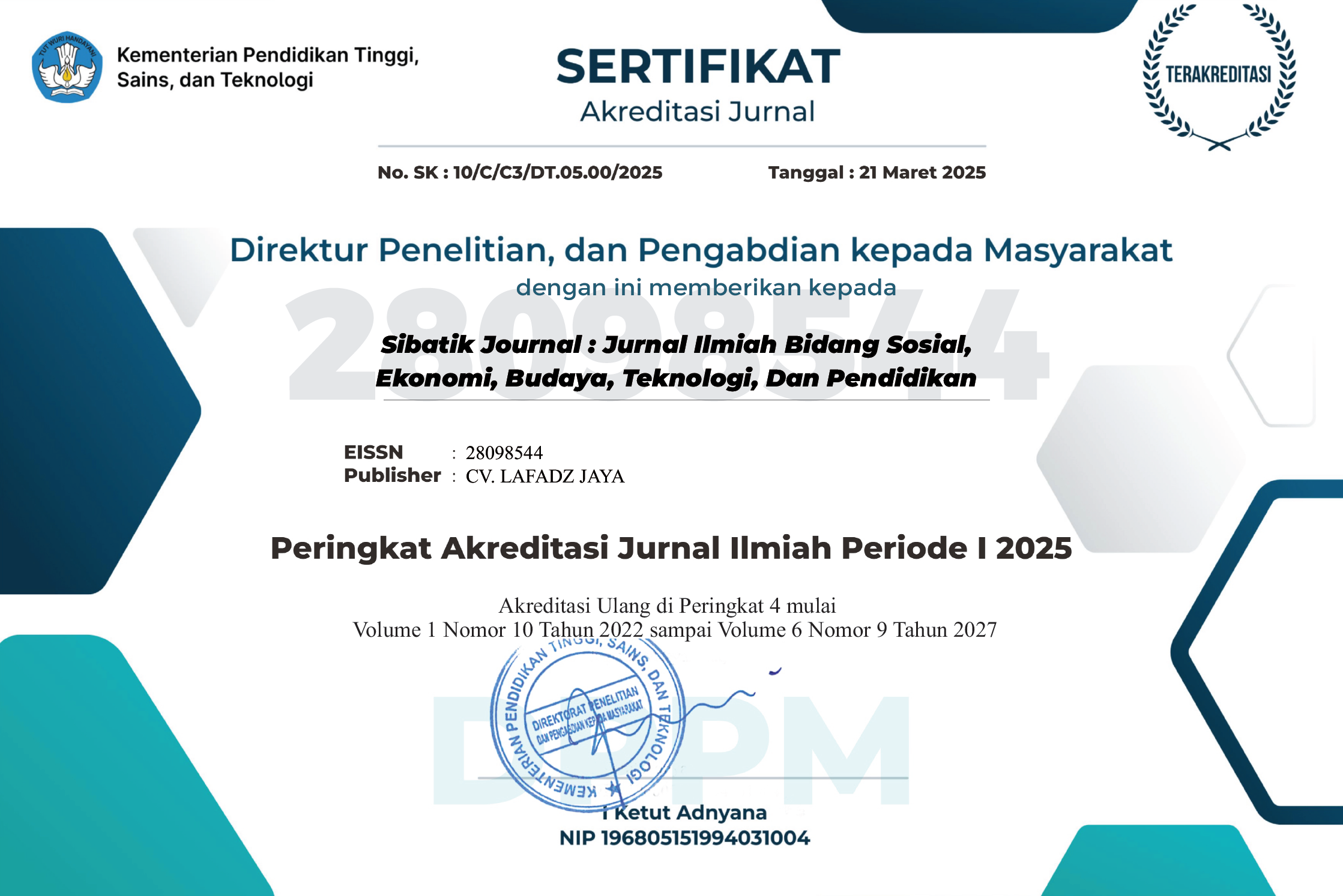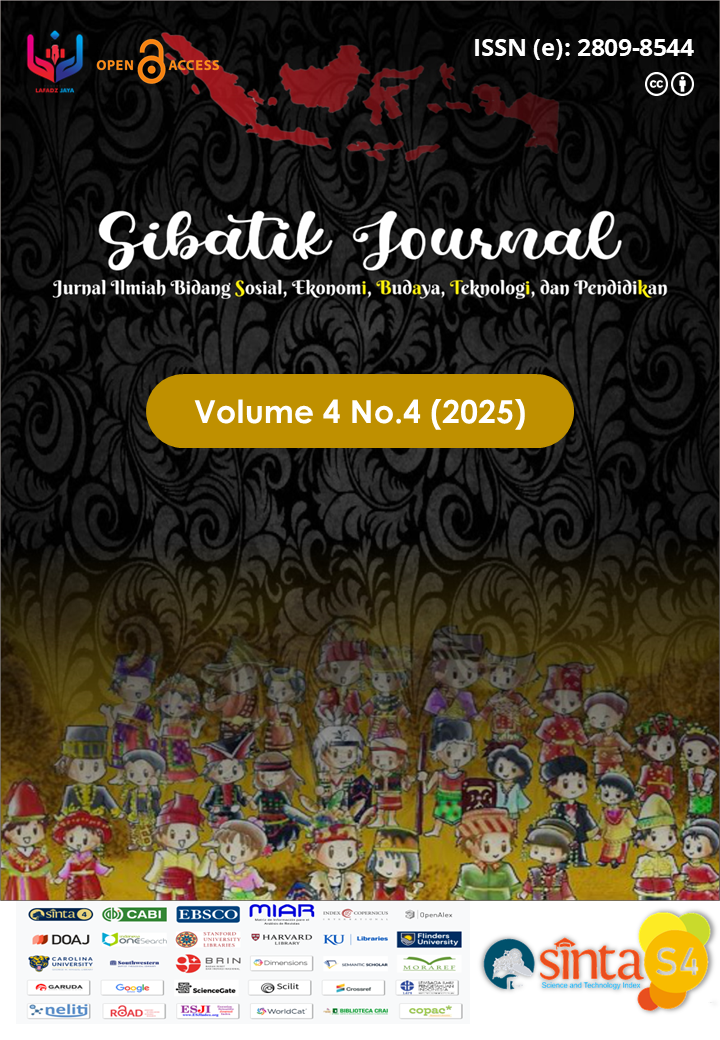QRIS ADOPTION DETERMINANTS: ANALYSIS OF THE ROLE OF EASE OF USE, TRUST, AND PROMOTION WITH USER SATISFACTION AS AN INTERVENING
Main Article Content
Herlina
Suhardi
Nelly Astuti
Hamdan
This study aims to analyze the determinants of QRIS adoption in Indonesia by integrating technological, psychological, and contextual perspectives. Using Structural Equation Modeling (SEM) on 320 user data, the study examined the influence of factors such as perceived ease of use (PEOU), user trust, promotion & education, and user satisfaction on QRIS adoption. The results show that user satisfaction and promotion-education have a significant effect on adoption, while ease of use only impacts satisfaction, not direct adoption. In contrast to classical theory, user trust is not significant in the Indonesian context, allegedly due to the dominance of financial incentive factors, government policies, and MSMEs' preference for practical benefits. These findings reinforce the relevance of Expectation-Confirmation Theory (ECT) and Diffusion of Innovation (DOI), while also highlighting the uniqueness of locality where targeted education and cashback programs are more effective than just system trust. The practical implications emphasize the need for an integrated strategy: economic benefit-based promotional campaigns, improved technical infrastructure to ensure the speed and security of transactions, and collaboration between regulators and service providers in expanding incentives for MSMEs. Further research is suggested to explore cultural factors (e.g., resistance to cashless transactions in rural areas) and qualitative approaches to understanding the perceptions of older generations. The study provides a holistic framework to accelerate the digital transformation of Indonesia's payments sector, prioritizing local context and real-world user experience.
Alalwan, A. A., Dwivedi, Y. K., & Rana, N. P. (2023). QR code payment adoption: Integrating TAM and institutional trust in a cross-cultural context. Journal of Retailing and Consumer Services, 70, 103157.
Amin, M., Firdaus, R., Nugroho, F., Suhardi, S., & Rejeki, N. S. (2024). Exploring the impact of product quality and cash on delivery on consumer purchase decisions for fashion products. International Journal on Social Science, Economics and Art, 14(3), 326–335. Retrieved from
https://www.ijosea.isha.or.id/index.php/ijosea/article/view/617
Bhattacherjee, A. (2001). Understanding information systems continuance: An expectation-confirmation model. MIS Quarterly, 25(3), 351–370.
Davis, F. D. (1989). Perceived usefulness, perceived ease of use, and user acceptance of information technology. MIS Quarterly, 13(3), 319–340.
Gefen, D., Karahanna, E., & Straub, D. W. (2003). Trust and TAM in online shopping: An integrated model. MIS Quarterly, 27(1), 51–90.
Kim, Y., Park, Y. J., & Choi, J. (2020). Consumer adoption of mobile payment services in Indonesia: The role of perceived risk and habit. Journal of Financial Services Marketing, 25(2), 67–81.
Liébana-Cabanillas, F., Marinković, V., & Kalinić, Z. (2022). A SEM-neural network approach to predict mobile payment adoption. Technological Forecasting and Social Change, 175, 121407.
Nguyen, T. D., Huynh, P. A., & Nguyen, T. H. (2022). Security concerns and cultural inertia: Barriers to QRIS adoption in Southeast Asia. Computers in Human Behavior, 134, 107302.
Oliveira, T., Thomas, M., Baptista, G., & Campos, F. (2016). Mobile payment: Understanding the determinants of customer adoption and intention to recommend the technology. Computers in Human Behavior, 61, 404–414.
Oliveira, T., Alhinho, M., Rita, P., & Dhillon, G. (2020). Modelling and testing consumer trust dimensions in mobile payment adoption. International Journal of Bank Marketing, 38(1), 214–235.
Pal, A., Herath, T., & Rao, H. R. (2023). Institutional assurance and user trust in digital payment systems: A cross-country analysis. Journal of Enterprise Information Management, 36(2), 1–22.
Rogers, E. M. (2003). Diffusion of innovations (5th ed.). Free Press.
Singh, S., Sharma, P., & Kalra, R. (2022). The role of government regulation in enhancing trust in digital payments: A study of QRIS adoption. Journal of Retailing and Consumer Services, 66, 102932.
Suryono, R. R., Budi, I., & Purwandari, B. (2023). QRIS adoption in Indonesia: The interplay of promotion, education, and infrastructure. Journal of Financial Innovation, 9(1), 45–60.
Venkatesh, V., Morris, M. G., Davis, G. B., & Davis, F. D. (2003). User acceptance of information technology: Toward a unified view. MIS Quarterly, 27(3), 425–478.
Venkatesh, V., Thong, J. Y. L., & Xu, X. (2020). Consumer acceptance and use of information technology: Extending the unified theory of acceptance and use of technology. International Journal of Information Management, 52, 102063.


























